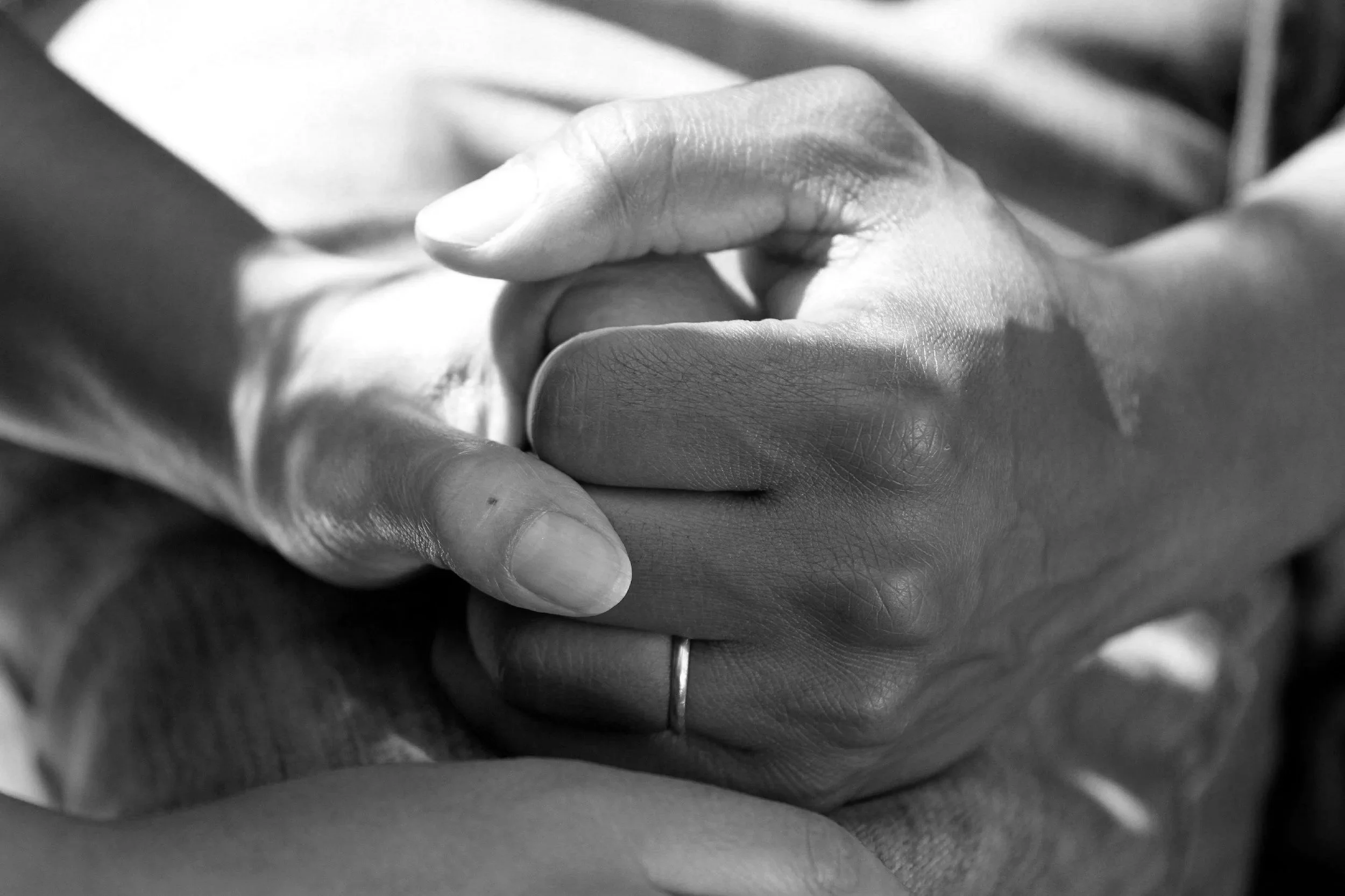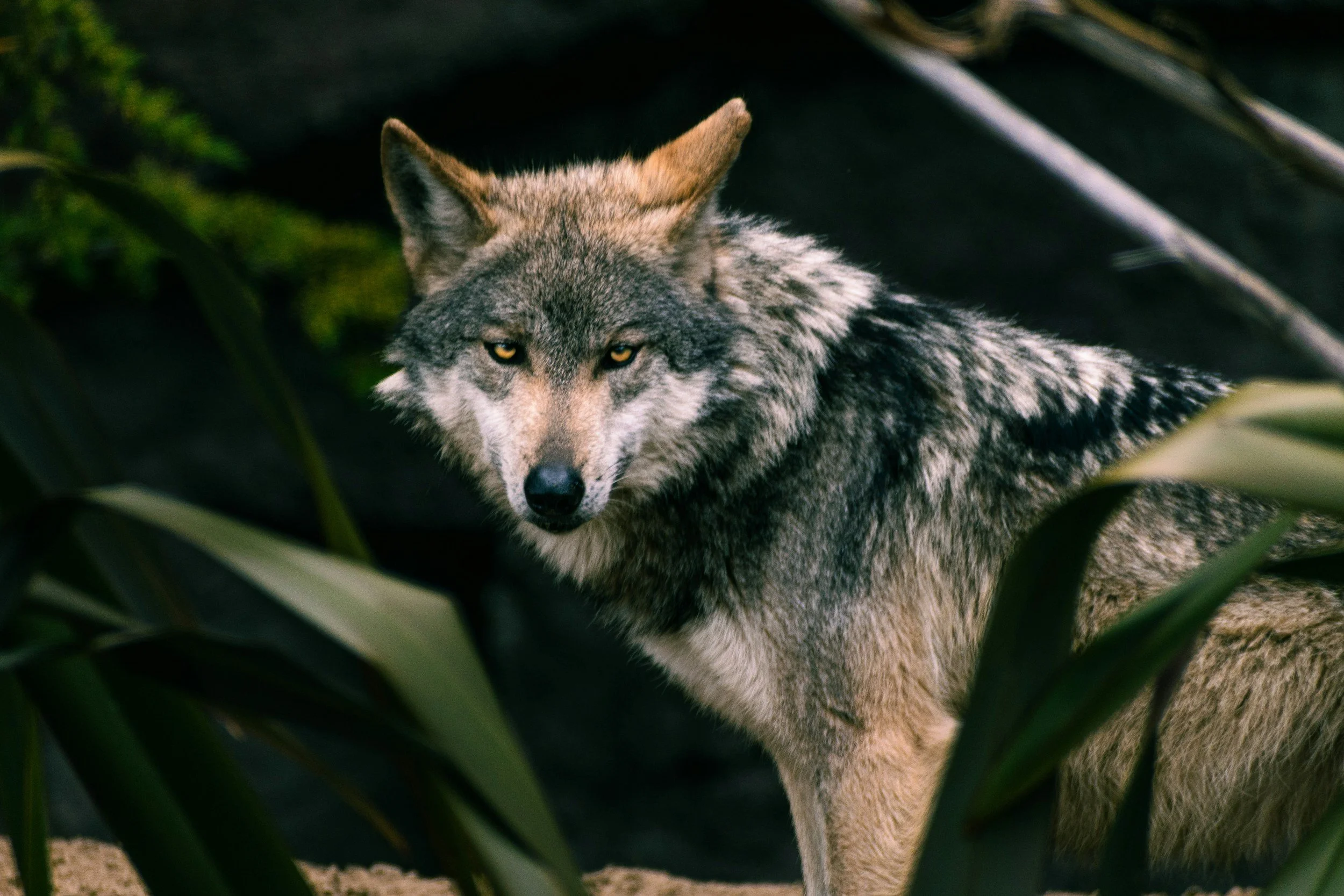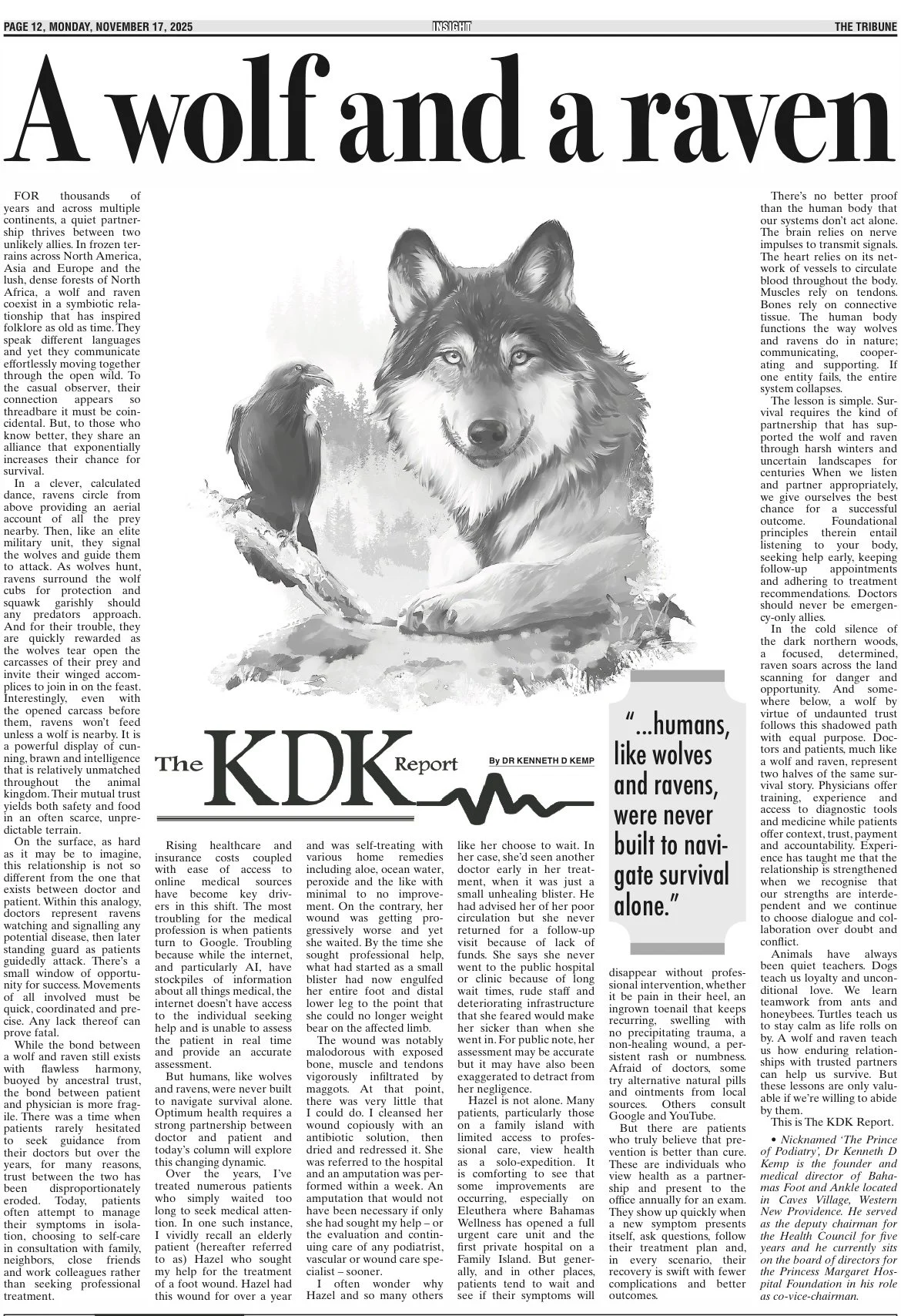Vol 124: A wolf and raven
For thousands of years and across multiple continents, a quiet partnership thrives between two unlikely allies. In frozen terrains across North America, Asia and Europe and the lush, dense forests of North Africa, a wolf and raven coexist in a symbiotic relationship that has inspired folklore as old as time. They speak different languages and yet they communicate effortlessly moving together through the open wild. To the casual observer, their connection appears so threadbare it must be coincidental. But, to those who know better, they share an alliance that exponentially increases their chance for survival.
In a clever, calculated dance, ravens circle from above providing an aerial account of all the prey nearby. Then, like an elite military unit, they signal the wolves and guide them to attack. As wolves hunt, ravens surround the wolf cubs for protection and squawk garishly should any predators approach. And for their trouble, they are quickly rewarded as the wolves tear open the carcasses of their prey and invite their winged accomplices to join in on the feast. Interestingly, even with the opened carcass before them, ravens won’t feed unless a wolf is nearby. It is a powerful display of cunning, brawn and intelligence that is relatively unmatched throughout the animal kingdom. Their mutual trust yields both safety and food in an often scarce, unpredictable terrain.
On the surface, as hard as it may be to imagine, this relationship is not so different from the one that exists between doctor and patient. Within this analogy, doctors represent ravens watching and signaling any potential disease, then later standing guard as patients guidedly attack. There’s a small window of opportunity for success. Movements of all involved must be quick, coordinated and precise. Any lack thereof can prove fatal.
While the bond between a wolf and raven still exists with flawless harmony, buoyed by ancestral trust, the bond between patient and physician is more fragile. There was a time when patients rarely hesitated to seek guidance from their doctors but over the years, for many reasons, trust between the two has been disproportionately eroded. Today, patients often attempt to manage their symptoms in isolation, choosing to self-care in consultation with family, neighbors, close friends and work colleagues rather than seeking professional treatment.
Rising healthcare and insurance costs coupled with ease of access to online medical sources have become key drivers in this shift. The most troubling for the medical profession is when patients turn to Google. Troubling because while the internet, and particularly AI, have stockpiles of information about all things medical, the internet doesn’t have access to the individual seeking help and is unable to assess the patient in real time and provide an accurate assessment.
But humans, like wolves and ravens, were never built to navigate survival alone. Optimum health requires a strong partnership between doctor and patient and today’s column will explore this changing dynamic.
Over the years, I’ve treated numerous patients who simply waited too long to seek medical attention. In one such instance, I vividly recall an elderly patient (hereafter referred to as) Hazel who sought my help for the treatment of a foot wound. Hazel had this wound for over a year and was self-treating with various home remedies including aloe, ocean water, peroxide and the like with minimal to no improvement. On the contrary, her wound was getting progressively worse and yet she waited. By the time she sought professional help, what had started as a small blister had now engulfed her entire foot and distal lower leg to the point that she could no longer weight bear on the affected limb.
The wound was notably malodorous with exposed bone, muscle and tendons vigorously infiltrated by maggots. At that point, there was very little that I could do. I cleansed her wound copiously with an antibiotic solution, then dried and redressed it. She was referred to the hospital and an amputation was performed within a week. An amputation that would not have been necessary if only she had sought my help – or the evaluation and continuing care of any podiatrist, vascular or wound care specialist – sooner.
I often wonder why Hazel and so many others like her choose to wait. In her case, she’d seen another doctor early in her treatment, when it was just a small unhealing blister. He’d advised her of her poor circulation but she never returned for a follow-up visit because of lack of funds. She says she never went to the public hospital or clinic because of long wait times, rude staff and deteriorating infrastructure that she feared would make her sicker than when she went in. For public note, her assessment may be accurate but it may have also been exaggerated to detract from her negligence.
Hazel is not alone. Many patients, particularly those on a family island with limited access to professional care, view health as a solo-expedition. It is comforting to see that some improvements are occurring, especially on Eleuthera where Bahamas Wellness has opened a full urgent care unit and the first private hospital on a Family Island. But generally, and in other places, patients tend to wait and see if their symptoms will disappear without professional intervention, whether it be pain in their heel, an ingrown toenail that keeps recurring, swelling with no precipitating trauma, a non-healing wound, a persistent rash or numbness. Afraid of doctors, some try alternative natural pills and ointments from local sources. Others consult Google and YouTube.
But there are patients who truly believe that prevention is better than cure. These are individuals who view health as a partnership and present to the office annually for an exam. They show up quickly when a new symptom presents itself, ask questions, follow their treatment plan and, in every scenario, their recovery is swift with fewer complications and better outcomes.
There’s no better proof than the human body that our systems don’t act alone. The brain relies on nerve impulses to transmit signals. The heart relies on its network of vessels to circulate blood throughout the body. Muscles rely on tendons. Bones rely on connective tissue. The human body functions the way wolves and ravens do in nature; communicating, cooperating and supporting. If one entity fails, the entire system collapses.
The lesson is simple. Survival requires the kind of partnership that has supported the wolf and raven through harsh winters and uncertain landscapes for centuries When we listen and partner appropriately, we give ourselves the best chance for a successful outcome. Foundational principles therein entail listening to your body, seeking help early, keeping follow-up appointments and adhering to treatment recommendations. Doctors should never be emergency-only allies.
In the cold silence of the dark northern woods, a focused, determined, raven soars across the land scanning for danger and opportunity. And somewhere below, a wolf by virtue of undaunted trust follows this shadowed path with equal purpose. Doctors and patients, much like a wolf and raven, represent two halves of the same survival story. Physicians offer training, experience and access to diagnostic tools and medicine while patients offer context, trust, payment and accountability. Experience has taught me that the relationship is strengthened when we recognize that our strengths are interdependent and we continue to choose dialogue and collaboration over doubt and conflict.
Animals have always been quiet teachers. Dogs teach us loyalty and unconditional love. We learn teamwork from ants and honeybees. Turtles teach us to stay calm as life rolls on by. A wolf and raven teach us how enduring relationships with trusted partners can help us survive. But these lessons are only valuable if we’re willing to abide by them.
This is The KDK Report.





